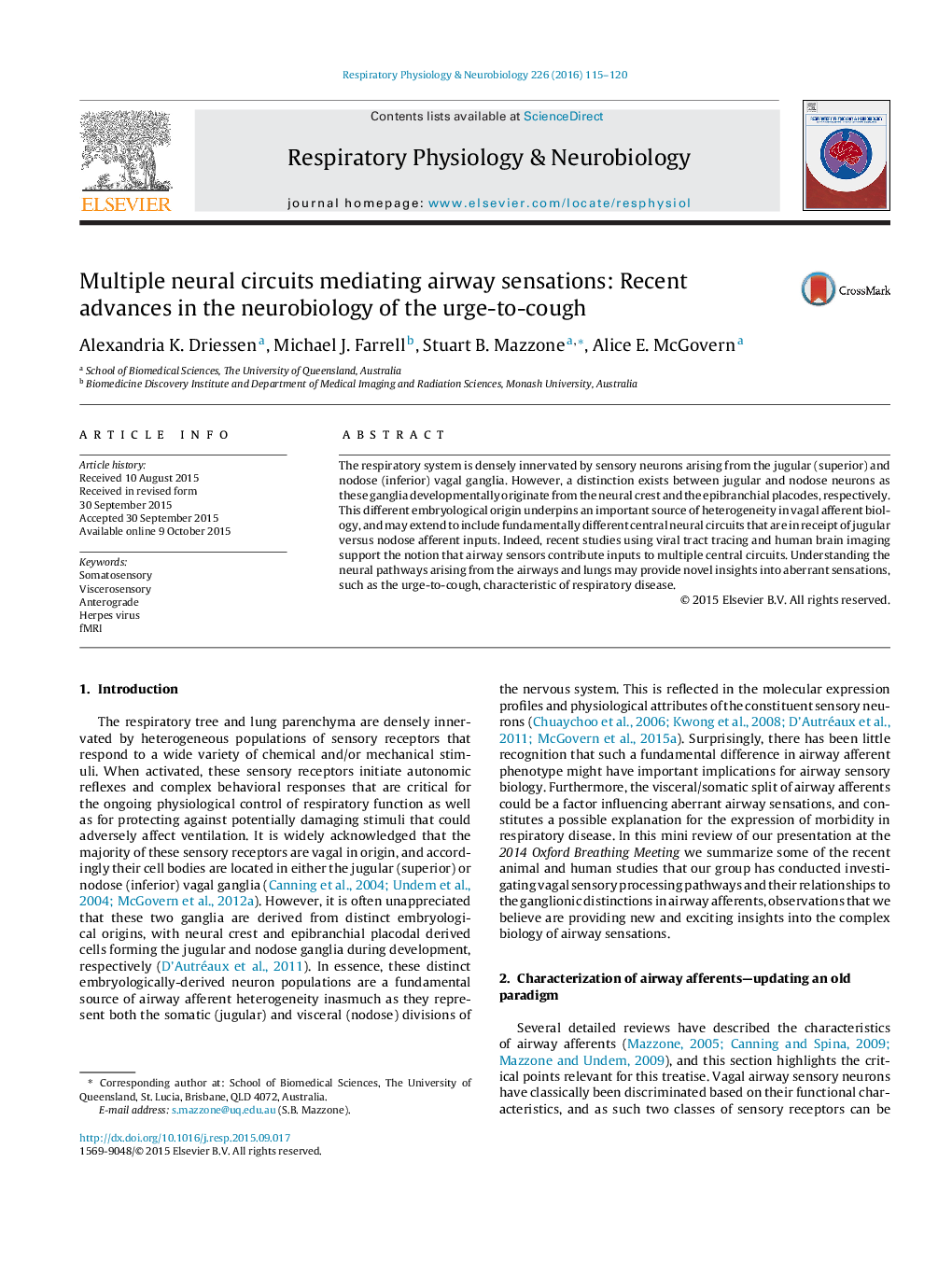| Article ID | Journal | Published Year | Pages | File Type |
|---|---|---|---|---|
| 2846723 | Respiratory Physiology & Neurobiology | 2016 | 6 Pages |
•Airway sensory neurons have different embryological origins.•Vagal neurons originate from both the neural crest and epibranchial placodes.•Jugular vagal neural circuits resemble the somatosensory nervous system.•Nodose neural circuits resemble the viscerosensory nervous system.•This heterogeneity results in fundamentally different sensory biology.
The respiratory system is densely innervated by sensory neurons arising from the jugular (superior) and nodose (inferior) vagal ganglia. However, a distinction exists between jugular and nodose neurons as these ganglia developmentally originate from the neural crest and the epibranchial placodes, respectively. This different embryological origin underpins an important source of heterogeneity in vagal afferent biology, and may extend to include fundamentally different central neural circuits that are in receipt of jugular versus nodose afferent inputs. Indeed, recent studies using viral tract tracing and human brain imaging support the notion that airway sensors contribute inputs to multiple central circuits. Understanding the neural pathways arising from the airways and lungs may provide novel insights into aberrant sensations, such as the urge-to-cough, characteristic of respiratory disease.
